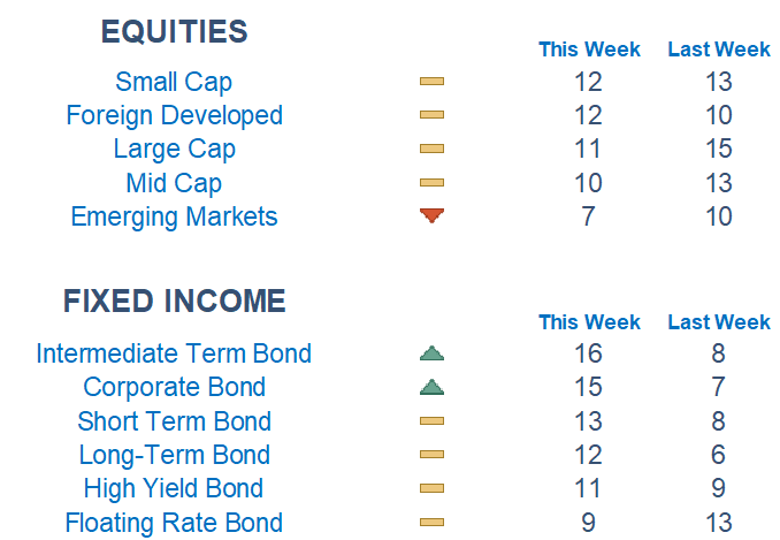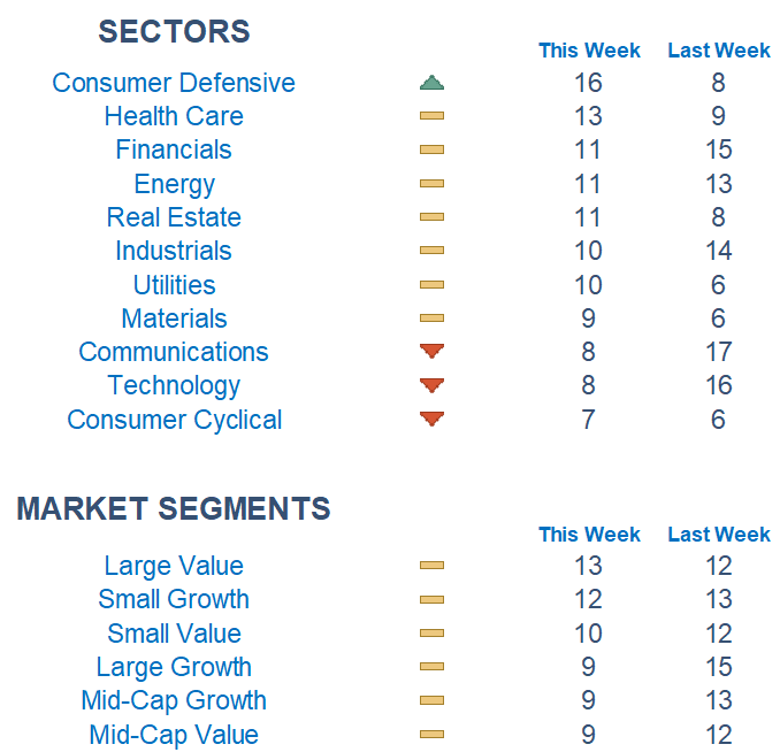Week of February 5th

This Week on Wall Street - Week of February 5th
Market Commentary
Stocks and bonds slipped to start the new week after recent stronger-than-expected economic data along with hints that the Federal Reserve is not ready to call victory on their inflation fight.
We received a new read on the service side of the economy this morning as the ISM services report showed the sector expanded by the most in 4 months. The ongoing strength in the economy is starting to worry market participants about how many cuts will be realized in 2024. This is due to the thought that a stronger-than-expected consumer will halt the recent disinflationary trends, extending the horizon for the Fed's higher for longer theme. This week we get a multitude of Fed speak coming off of last week's meeting.
Newton scores are showing a weakening rate of change in equity indexes as Small Caps sit slightly on top compared to their larger cap counterparts. On the fixed-income side, we are starting to see more strength out of corporates and intermediate-term bonds. Beneath the surface, Consumer Defensives and Health Care are on top. Consumer Cyclical, Technology, and Communications now are sitting at the bottom of the stack.
Stories to Start the Week
The National Weather Service has warned about flooding and mudslides as Los Angeles was forecast to see close to half a year’s worth of rain by Tuesday.
The US carried out further strikes against the Iran-backed Houthi group in Yemen early on Sunday, the US military said.
Boeing found more mistakes with holes drilled in the fuselage of its 737 Max jet.
McDonald’s has upgraded its burgers — but it’s unclear if its sales will get the same boost.
The average rate on the popular 30-year fixed mortgage crossed over 7% on Monday for the first time since December.
Economic Releases This Week
Monday: ISM Services
Tuesday: Fed Speak: Cleveland Fed President Mester, Minneapolis Fed President Kashkari, Boston Fed President Collins, Philadelphia Fed President Harker
Wednesday: US Trade Deficit, Richmond Fed President Speaks, Consumer Credit
Thursday: Initial Jobless Claims, Wholesale Inventories
Friday: Dallas Fed President Logan Speaks

What is Newton?
Our Newton model attempts to determine the highest probability of future price direction by using advanced algorithmic and high-order mathematical techniques on the current market environment to identify trends in underlying security prices. The Newton model scores securities over multiple time periods on a scale of 0-20 with 0 being the worst and 20 being the best possible score. Trend & level both matter.


Technical trading models are mathematically driven based upon historical data and trends of domestic and foreign market trading activity, including various industry and sector trading statistics within such markets. Technical trading models, through mathematical algorithms, attempt to identify when markets are likely to increase or decrease and identify appropriate entry and exit points. The primary risk of technical trading models is that historical trends and past performance cannot predict future trends and there is no assurance that the mathematical algorithms employed are designed properly, updated with new data, and can accurately predict future market, industry and sector performance.
